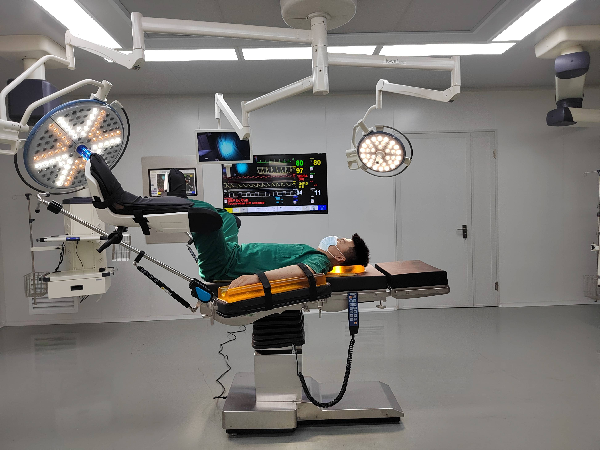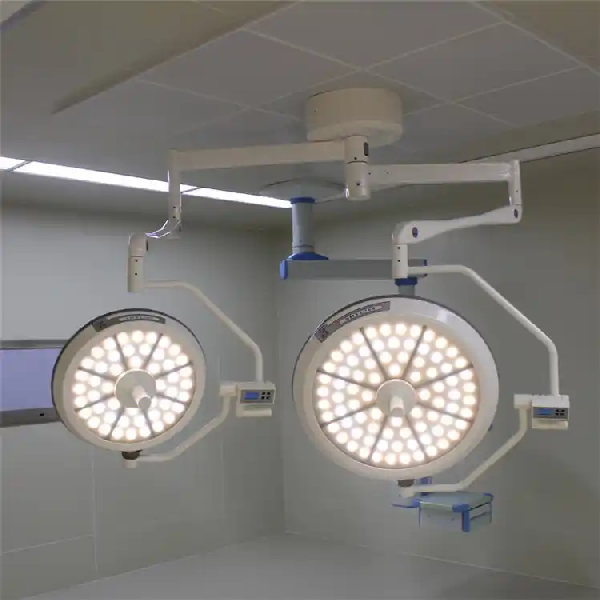Surgical shadowless lamps are essential lighting tools during surgery. For qualified equipment, some key performance indicators must meet the standards in order to meet our usage requirements.
Firstly, it is important to have sufficient illumination. The illumination of the surgical shadowless lamp can reach over 150000 LUX, which is close to the brightness under sunlight on sunny days in summer. However, the actual illumination used is generally suitable between 40000 and 100000 LUX. If it is too bright, it will affect vision. Surgical shadowless lamps should provide sufficient illumination while also avoiding glare from the beam on surgical instruments. Glare can also affect vision and vision, easily causing eye fatigue for doctors and hindering surgical procedures. The illuminance of the surgical shadowless lamp should not differ too much from the normal illuminance in the operating room. Some illuminance standards stipulate that the overall illuminance should be one tenth of the local illuminance. The overall illumination of the operating room should be above 1000LUX.

Secondly, the shadowless degree of the surgical shadowless lamp should be high, which is an important feature and performance indicator of the surgical shadowless lamp. Any shadow formed within the surgical field of view will hinder the doctor’s observation, judgment, and surgery. A good surgical shadowless lamp should not only provide sufficient illumination, but also have high shadowless intensity to ensure that the surface and deep tissues of the surgical field of view have a certain degree of brightness.
Due to the linear propagation of light, when light shines on an opaque object, a shadow will form behind the object. Shadows vary in different places and at different times. For example, the shadow of the same person in the sunlight is longer in the morning and shorter at noon.
By observation, we can see that the shadow of an object under electric light is particularly dark in the middle and slightly shallow around it. The particularly dark part in the middle of the shadow is called the umbra, and the dark part around it is called the penumbra. The occurrence of these phenomena is closely related to the principle of linear propagation of light. The mystery can be revealed through the following experiment.

We place an opaque cup on a horizontal tabletop and light a candle next to it, casting a clear shadow behind the cup. If two candles are lit next to a cup, two overlapping but non overlapping shadows will be formed. The overlapping part of the two shadows will be completely dark, so it will be completely black. This is the umbra; The only place next to this shadow that can be illuminated by a candle is the half dark half shadow. If three or even four or more candles are lit, the umbra will gradually shrink, and the penumbra will appear in many layers and gradually become darker.
The same principle applies to objects that can produce shadows composed of umbra and penumbra under electric light. An electric lamp emits light from a curved filament, and the emission point is not limited to one point. The light emitted from a certain point is blocked by the object, while the light emitted from other points may not necessarily be blocked. Obviously, the larger the area of the luminous body, the smaller the umbra. If we light a circle of candles around the cup mentioned above, the umbra will disappear and the penumbra will be so faint that it cannot be seen.
Post time: Nov-18-2024

